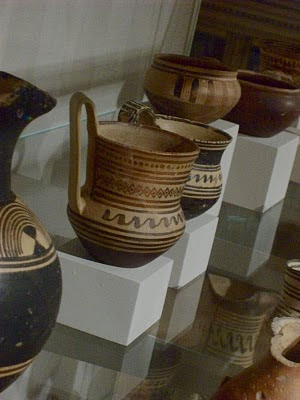These new works are vigorous, funky and really fun to walk around, peer into, and experience from
many viewpoints. They seem to mainly be formed by extruded hollow tubes that are manipulated
by twisting, stacking, combining, leaning into each other. Openings and negative space shapes enliven
what might feel overly ponderous. The glazes are slapped on in big, gloppy strokes or allowed to
drip where they will. Colors are muted putty mauves, pinks as well as bright yellows, reds and
bitumen-like browns and gunmetals.



















































